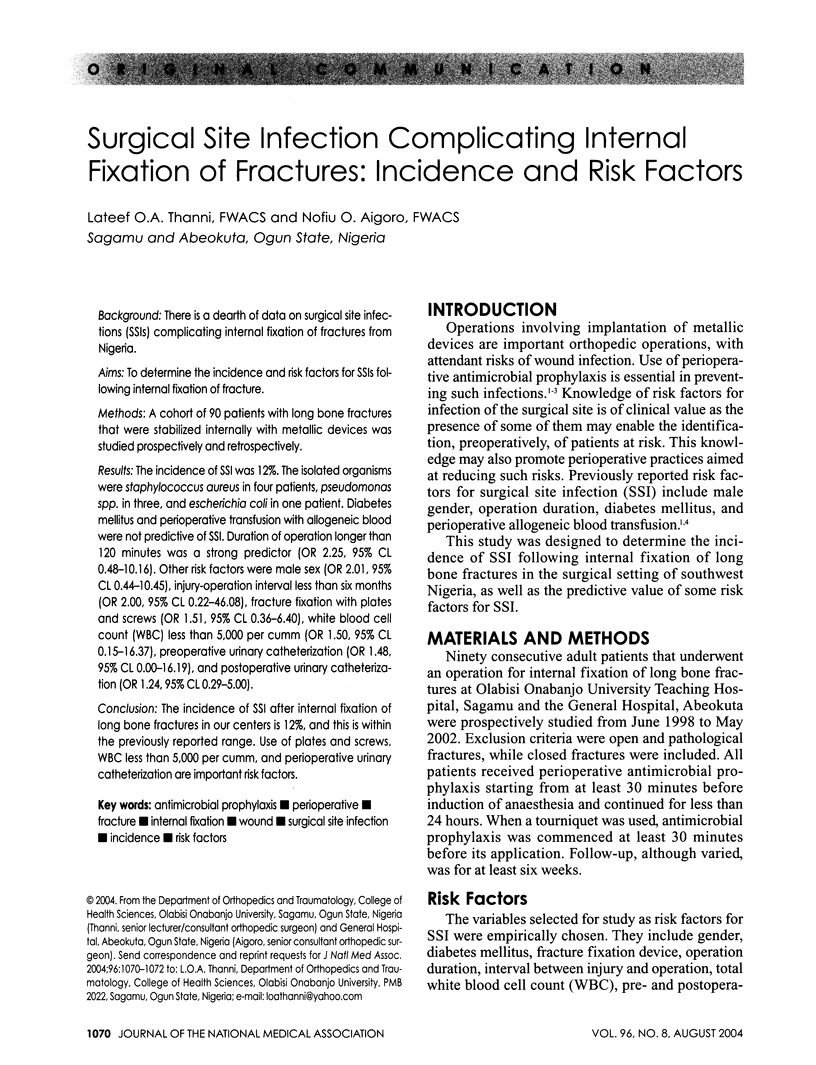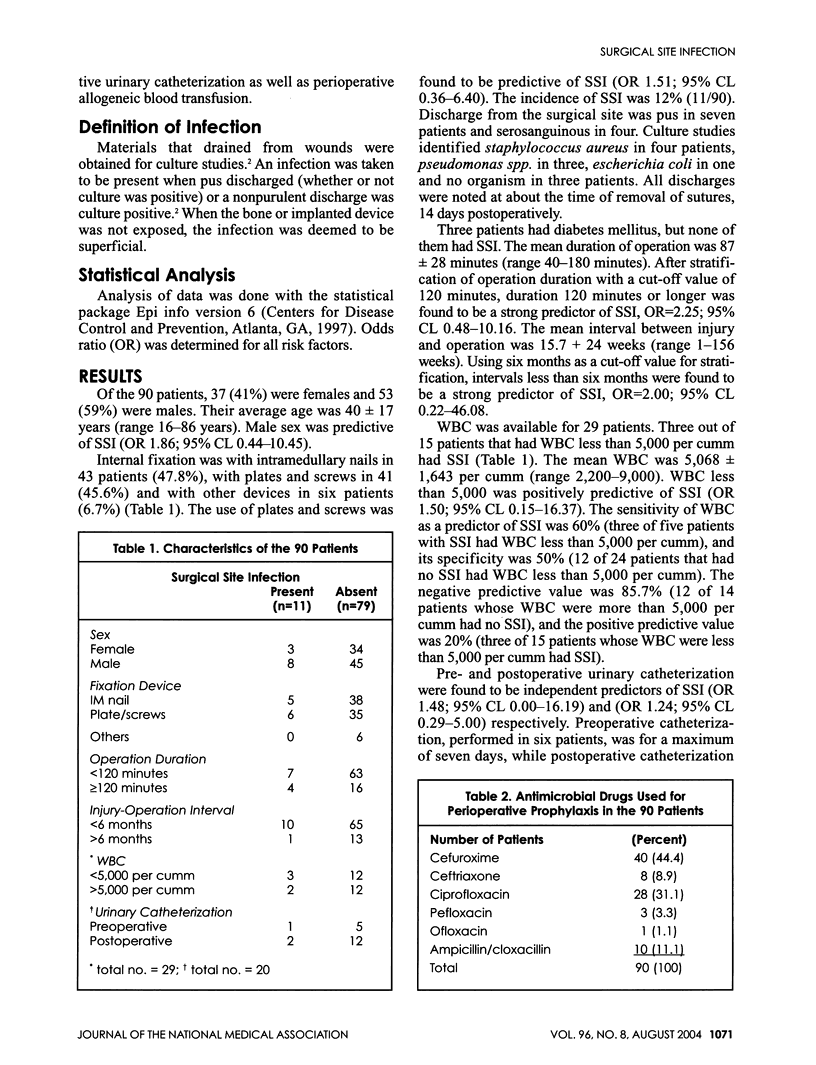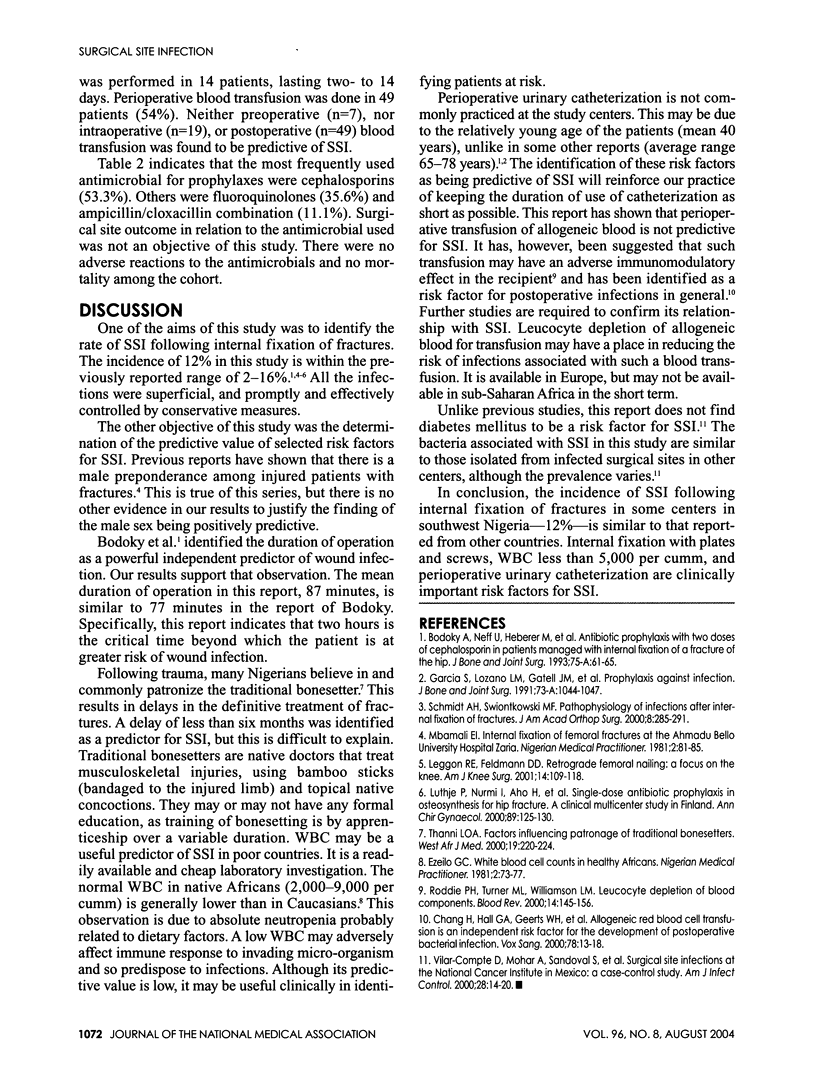Abstract
BACKGROUND: There is a dearth of data on surgical site infections (SSIs) complicating internal fixation of fractures from Nigeria. AIMS: To determine the incidence and risk factors for SSIs following internal fixation of fracture. METHODS: A cohort of 90 patients with long bone fractures that were stabilized internally with metallic devices was studied prospectively and retrospectively. RESULTS: The incidence of SSI was 12%. The isolated organisms were Staphylococcus aureus in four patients, Pseudomonas spp. in three, and Escherichia coli in one patient. Diabetes mellitus and perioperative transfusion with allogeneic blood were not predictive of SSI. Duration of operation longer than 120 minutes was a strong predictor (OR 2.25, 95% CL 0.48-10.16). Other risk factors were male sex (OR 2.01, 95% CL 0.44-10.45), injury-operation interval less than six months (OR 2.00, 95% CL 0.22-46.08), fracture fixation with plates and screws (OR 1.51, 95% CL 0.36-6.40), white blood cell count (WBC) less than 5,000 per cumm (OR 1.50, 95% CL 0.15-16.37), preoperative urinary catheterization (OR 1.48, 95% CL 0.00-16.19), and postoperative urinary catheterization (OR 1.24, 95% CL 0.29-5.00). CONCLUSION: The incidence of SSI after internal fixation of long bone fractures in our centers is 12%, and this is within the previously reported range. Use of plates and screws, WBC less than 5,000 per cumm, and perioperative urinary catheterization are important risk factors.
Full text
PDF


Selected References
These references are in PubMed. This may not be the complete list of references from this article.
- Chang H., Hall G. A., Geerts W. H., Greenwood C., McLeod R. S., Sher G. D. Allogeneic red blood cell transfusion is an independent risk factor for the development of postoperative bacterial infection. Vox Sang. 2000;78(1):13–18. doi: 10.1159/000031143. [DOI] [PubMed] [Google Scholar]
- Leggon R. E., Feldmann D. D. Retrograde femoral nailing: a focus on the knee. Am J Knee Surg. 2001 Spring;14(2):109–118. [PubMed] [Google Scholar]
- Lüthje P., Nurmi I., Aho H., Honkanen P., Jokipii P., Kataja M., Kytõmaa J., Nirhamo J., Pekkanen A., Rimpiläinen J. Single-dose antibiotic prophylaxis in osteosynthesis for hip fractures. A clinical multicentre study in Finland. Ann Chir Gynaecol. 2000;89(2):125–130. [PubMed] [Google Scholar]
- Roddie P. H., Turner M. L., Williamson L. M. Leucocyte depletion of blood components. Blood Rev. 2000 Sep;14(3):145–156. doi: 10.1054/blre.2000.0130. [DOI] [PubMed] [Google Scholar]
- Schmidt A. H., Swiontkowski M. F. Pathophysiology of infections after internal fixation of fractures. J Am Acad Orthop Surg. 2000 Sep-Oct;8(5):285–291. doi: 10.5435/00124635-200009000-00002. [DOI] [PubMed] [Google Scholar]
- Thanni L. O. Factors influencing patronage of traditional bone setters. West Afr J Med. 2000 Jul-Sep;19(3):220–224. [PubMed] [Google Scholar]


